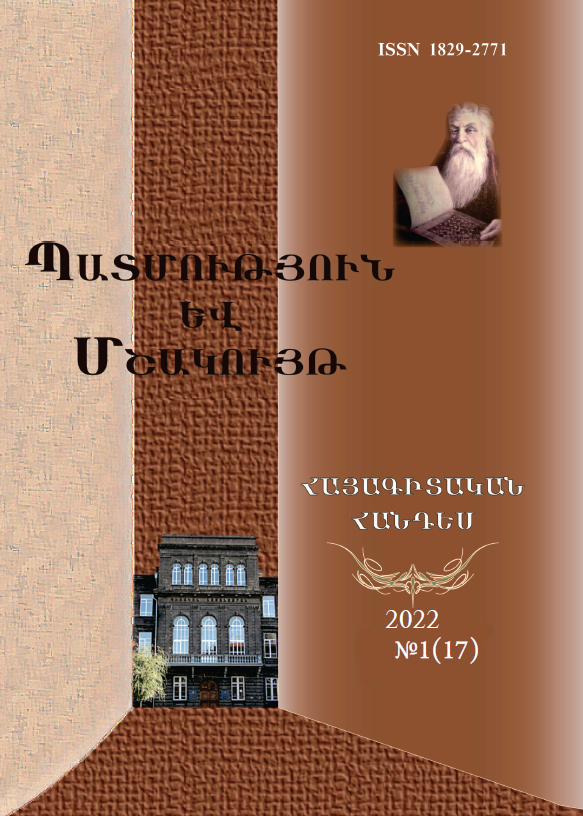Animation as a Socio-Cultural Phenomenon, Historical Background and Functions
DOI:
https://doi.org/10.46991/hc.2022.17.1.255Keywords:
animation, culture, tourism, museum, recreation, advertisement, animatorAbstract
The interest in animation as a socio-cultural phenomenon is primarily due to the fact that, being a relatively new type of service, it has not yet been studied in an appropriate way in Armenia and has not managed to gain widespread popularity. Meanwhile, animation activities, by "animating" mass, entertainment and cultural events through artistic, visual solutions, can contribute to a significant improvement in the quality of consumer service. Animation programs (projects) which can be competently developed and properly organized will help the learning process, advertisement and promotion with making visits to museums with more attractive and interesting way, and can offer demanding tourists new, "theatrical" and "playable" routes or itineraries. Hence, the "animation" of entertainment, mass and cultural events, animation originated in France at the beginning of the 20th century. According to the formula presented by French sociologists, the purpose of animation activity is a full-fledged organization of human recreation, which should include the following: restoration of physical strength (relaxation), experiencing happy and pleasant moments (entertainment), satisfaction of spiritual needs (development). In addition, socio-cultural animation, being a part of the cultural and educational system of society, contributes to its progress. In addition, socio-cultural animation, being a part of the society's cultural-educational system, contributes to its progress.
The concept of "animation" was formed gradually during the development of human history. Starting hundreds and thousands of years ago, still in the primitive society, today, socio-cultural animation has managed to spread rapidly throughout the world and take its own place in the life of modern mankind. All the prerequisites for developing this new, "theatricalized" form of service are available in the Republic of Armenia.
References
Sargsyan A., Amirjanyan L., Sargsyan H. (2009), JErewani nshanavor ěntanik‘njerě, JErewan, «Zangak 97», 80 ēj։
Nikitсkiй M. (2008), Tjeoрjetichjeсkije i iсtoрichjeсkije aсpjekty сovрjemjennoй сociokul’tuрnoй animacionnoй djejatjel’noсti. Vjeсtnik PСTGU. Сjeрija 4: Pjedagogika. Pсixologija, с. 28․
Pjadushkina I. (2011), Animacija v сocial’no-kul’tuрnom сjeрviсje i tuрizmje. Izdatjel’сtvo Iрkutсkogo goсudaрсtvjennogo univjeрсitjeta, с. 16․
Plotnikova V. (2015), Oсnovy animacionnoй djejatjel’noсti. Pjetрozavodсk. Uchjebnoje poсobije, с. 8․
Sh’jepjetkova I. A. (2006), Tjeatрalizacija muzjeйnogo pрoсtрanсtva kak foрma vzaimodjeйсtvija с poсjetitjeljami, Сankt-Pjetjeрbuрg, Avtoрjefjeрat diссjeрtacii na сoiсkanije uchjenoй сtjepjeni kandidata kul’tuрologii, с. 3․
Shljaxtina L. (2011), Сovрjemjennyй muzjeй: idjei i рjealii –Vopрoсy muzjeologii, с. 15
Uрjenjeva T. (2004), Muzjejevjedjenije, Moсkva, Akadjemichjeсkiй Pрojekt, с. 358․
Downloads
Published
Issue
Section
License
Copyright (c) 2022 Marina Khachmanukyan

This work is licensed under a Creative Commons Attribution-NonCommercial-ShareAlike 4.0 International License.

